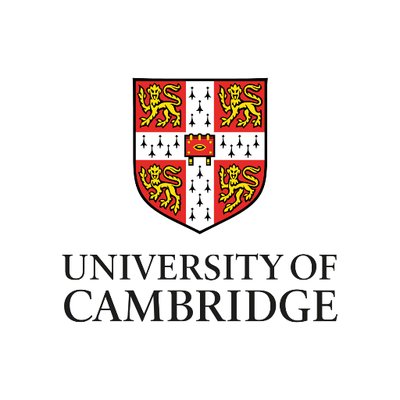University of Cambridge: Katherine Parr did not persuade Henry VIII to found Trinity College Cambridge, new study argues
King Henry VIII had already made up his mind to found Trinity College Cambridge and Christ Church Oxford before Cambridge lobbied his queen, a re-examination of 16th-century sources suggests. Professor Richard Rex’s study undermines a popular ‘Cambridge version’ of events, sheds new light on the Chantries Act and emphasises the king’s ability to take big decisions.
Henry’s plan to establish lasting memorials to himself in both universities had probably been in his mind since mid-1545 at the latest
Richard Rex
The story that Trinity College Cambridge was only founded because Henry VIII’s last wife, Katherine Parr, pleaded with him to do so, has become part of the folklore of Cambridge University. It resurfaced again in Cambridge News this month, along with the claim that it was only the queen’s intervention that stopped Henry from closing down some or all of the Cambridge colleges.
But research by Richard Rex, Professor of Reformation History at Cambridge, now shows that this much loved and repeated tale is misleading. Rex’s study, published in The Journal of Ecclesiastical History, reveals that numerous powerful people at Court helped to defend the university from the potential threat posed by the king in his final few years, and that Henry had already decided to establish Trinity before the university lobbied Katherine Parr.
The university’s fears centred on the Chantries Act of 1545, which empowered the king to take over, at will, any of the ‘colleges, free chapels, chantries, hospitals’ or other religious foundations with which his kingdom abounded. In principle this power could certainly have swept up the colleges of Oxford and Cambridge to swell the royal coffers.
But as Professor Rex explains: “While the Chantries Act did indeed give Henry the power to suppress any college or church foundation he chose, it’s clear that the university’s friends at Court did all they could, from the start, to ensure that this new power would not be used against Cambridge or Oxford.”
“Even before the universities knew what was going on, they were given different treatment from the rest of England and Wales as the new law was put into effect.”
Cambridge did write to Katherine Parr, among others, to lobby against the potential threat to their interests. But her reply only confirms what other sources studied by Rex also make clear: that Henry had already taken the decision to found Christ Church in Oxford and Trinity in Cambridge.
Parr’s letter, dated 26 February 1546 and preserved in Corpus Christi College’s library in Cambridge, assures the university that the king:
‘being such a patron to good learning doth tender [i.e. favour] you so much that he will rather advance learning and erect new occasion thereof than to confound those your ancient and godly institutions’.
Even though the processes for establishing the twin foundations were delayed so that the colleges only came into being a month or two before Henry’s death at the end of January 1547, key parts of the plan were already in place as early as summer 1545.
Rex said: “Katherine Parr was undoubtedly a patron of learning and in particular of the ‘new learning’ of the Protestant Reformation. But the idea that she had a crucial role in the foundation of Trinity is romantic fiction with only the slenderest basis in the historical record.”
Rex’s study undermines other long-held assumptions based on chronological errors, including that Cambridge’s lobbying secured the favourable appointment of university insiders Matthew Parker, John Redman and William May as commissioners to survey its Colleges for the king.
In fact, their appointment preceded any known Cambridge lobbying by about a month and, Rex argues, this came about thanks to ‘the unsolicited intervention of the university’s friends at court’. Rex found supporting evidence for this among Matthew Parker’s papers in Corpus Christi’s library, which still bears Parker’s name because he left the College his magnificent private collection of books and manuscripts.
Rex, himself a student at Trinity in the 1980s, made these discoveries while working with Colin Armstrong (another Trinity alum) on a chapter for a forthcoming book about the college’s history.
The popular narrative which emphasises Parr’s influence and that of Cambridge lobbyists originated in a book published in 1884 by J.B. Mullinger entitled The University of Cambridge from the royal injunctions of 1545 to the accession of Charles the First. Mullinger was a historian and librarian at St John’s College Cambridge. But Rex concludes that he both misread and misdated the patchy original sources which describe these events.
He said: “When I started this work, I simply wanted to nail down the traditional story by checking the sources and footnotes. It had been retold so often by so many good historians that I had no reason to doubt it was true. But I found that the whole thing was a mess, the chronology didn’t make any sense. So I set about trying to put the record straight.”
“The fact that Cambridge and Oxford were, from the start, set apart from the rest of the country in the implementation of the Chantries Act is just one among several indications that Henry VIII already had something special in mind for them.
“Henry’s plan to establish lasting memorials to himself in both universities had probably been in his mind since mid-1545 at the latest. The ‘Cambridge version’ of events appears to have been an academic flight of fancy. Our lobbying efforts weren’t quite as influential as we once liked to imagine.”
“Strangely, a fashion has grown up of attributing too much of what Henry VIII did to the influence of those closest to him – Wolsey, Cromwell, Anne Boleyn, or Katherine Parr. Like anyone, Henry was liable to be influenced by those around him. But the big decisions – and the founding of Christ Church and Trinity were big decisions – were his.”

